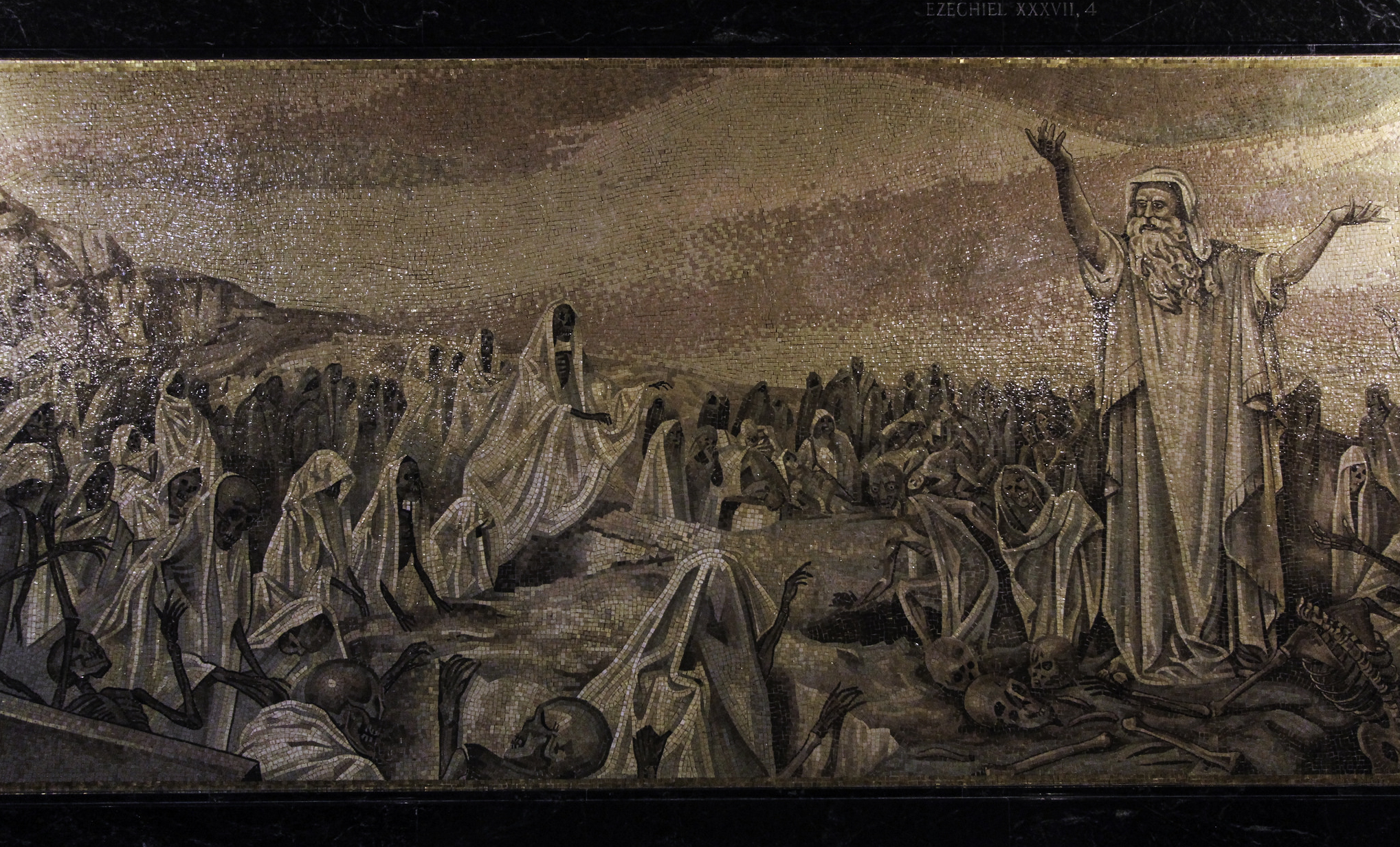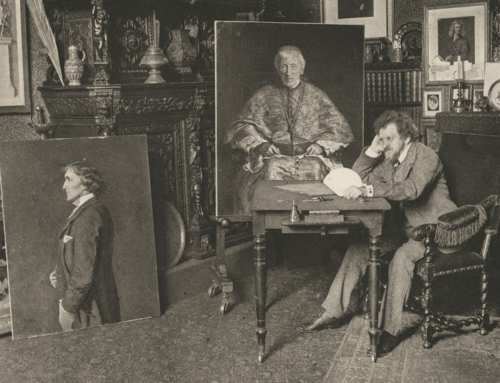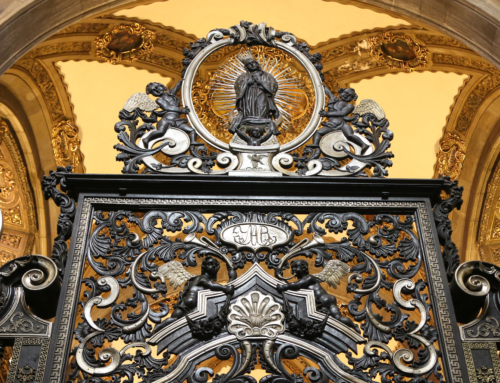Bones through a gap in the broken wall. Bones old and dry strewn in their subterranean tomb. Why stop and stare, why feast the eyes on the fleshless remains of some dead ancient fisherman? Should not these tokens be things to flee, to avoid contact with the horrors of death, which thrust this man out of our world? He is gone—is he not?—beyond our reach. Has not death reared a chasm we cannot bridge?
For the ancient Roman pagan, death divided and destroyed the dearly departed. Aeneas, the archetypal Roman, suffered this separation from the dead even during his privileged journey through the underworld. Though he spoke with them, they still remained beyond his grasp. Meeting his father, Aeneas “tried three times / to throw his arms around his father’s neck, / three times the shade untouched slipped through his hands, / weightless as wind and fugitive as dream” (Aeneid, VI, 939-942). In death his father slipped from Aeneas’ embrace. Nothing left but cold bones and ungraspable spirit.
Bones and graves understandably filled the men and women of ancient Rome with aversion. Cemeteries occupied locations on the outskirts of the cities, beyond the scope of community life, beyond communion. Even to look upon the dead was to stain the eyes with ill-omened sights. Death and the dead were things of horror and repulsion. For them, Herbert wrote truly:
Death, thou wast once an uncouth hideous thing,
Nothing but bones,
The sad effect of sadder groans:
Thy mouth was open, but thou couldst not sing.
But for the Christian, death’s horror is dissipated. The souls of the faithful departed will not be forever beyond our embrace. There is resurrection for the followers of “the living one” who tells His faithful, “I died, and behold I am alive for evermore, and I have the keys of Death and Hades” (Rev. 1:18). By our Baptism, we entered the death and resurrection of our Lord; we received the Spirit of Life. As St. Paul tells us, “If the Spirit of him who raised Jesus from the dead dwells in you, he who raised Christ Jesus from the dead will give life to your mortal bodies also through his Spirit which dwells in you” (Rom. 8:11). As Christ’s body rose from the dead, was seen and touched, so too shall the bodies of our loved ones rise again. Then we shall embrace not a fleeting dream or ephemeral wind, but the whole person.
The bodies of the dead are not objects of horror or fear. From the body of our crucified Lord to those of his holy servants, dead bodies figure centrally in our faith. Hence, the pagan Julian the Apostate accused Christians: “You keep adding many corpses newly dead to the corpses of long ago. You have filled the whole world with tombs and sepulchres.” Where the Church spreads, she brings the relics of her saints. Why? These bones that so appalled Julian belong to the dead who have found eternal life. These saints, filled with the Spirit, dwell with the Living One. Dwelling in heaven, the saints gaze with love upon us who look upon their relics. These bones, though cold, are not forgotten. Someday, they shall be clothed again. For them, on that day, Herbert wrote truly:\
When souls shall wear their new array,
And all thy bones with beauty shall be clad.
Bones through a gap in the broken wall. Bones I longed to look upon. Bones of a man who rushed impetuously into another tomb in search of another body. Bones of a man whose body shook with tears of repentance. Bones of a man whose lips professed his love of his Lord. Bones of a man whose hands were stretched out, body girt, and feet led where he did not wish to go. Bones of a man who laid down his life for his friend and Lord. Bones of a man I hope one day to embrace as a father. And so, I stop and stare at the bones of this dead ancient fisherman.
✠
Photo by Fr. Lawrence Lew, O.P. (used with permission).







